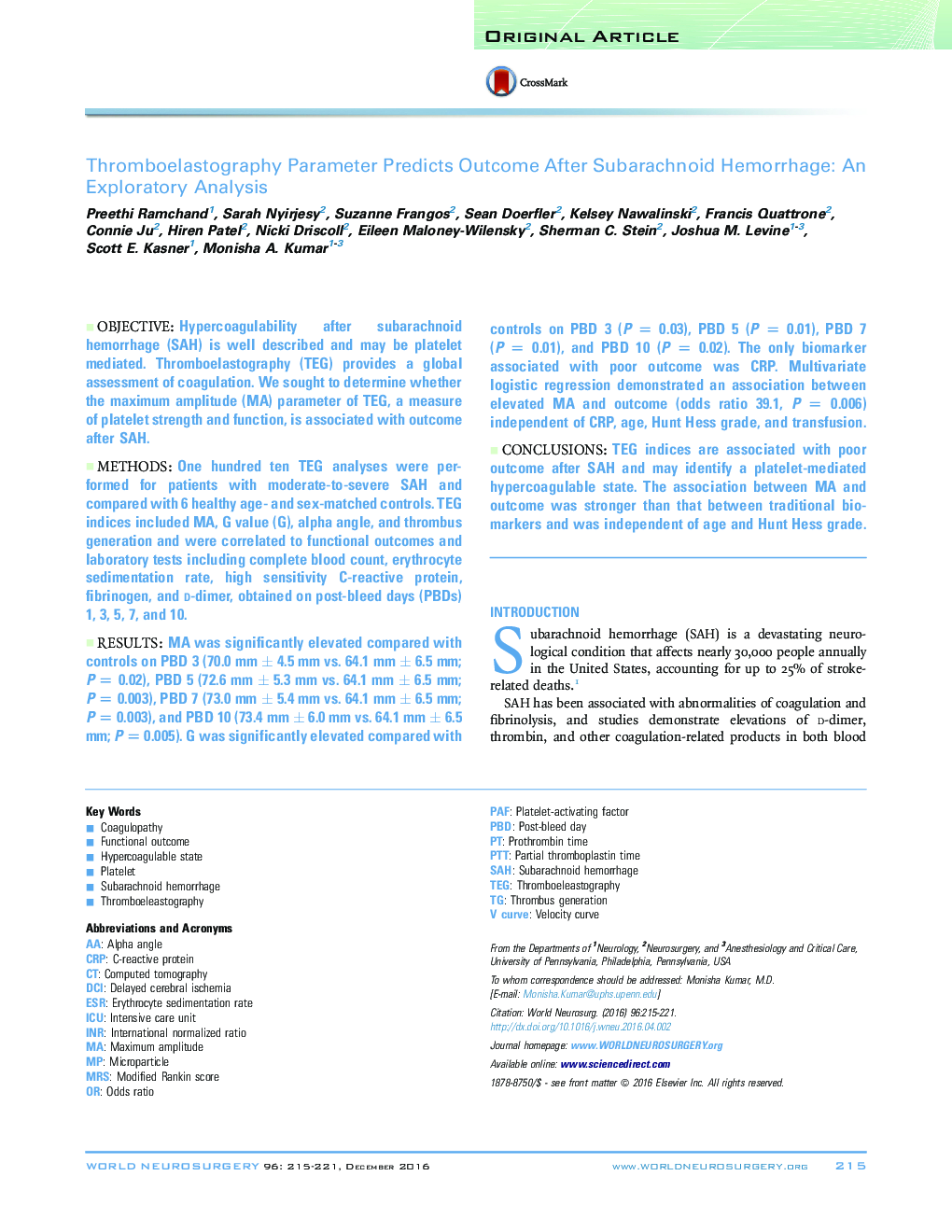| Article ID | Journal | Published Year | Pages | File Type |
|---|---|---|---|---|
| 5635024 | World Neurosurgery | 2016 | 7 Pages |
ObjectiveHypercoagulability after subarachnoid hemorrhage (SAH) is well described and may be platelet mediated. Thromboelastography (TEG) provides a global assessment of coagulation. We sought to determine whether the maximum amplitude (MA) parameter of TEG, a measure of platelet strength and function, is associated with outcome after SAH.MethodsOne hundred ten TEG analyses were performed for patients with moderate-to-severe SAH and compared with 6 healthy age- and sex-matched controls. TEG indices included MA, G value (G), alpha angle, and thrombus generation and were correlated to functional outcomes and laboratory tests including complete blood count, erythrocyte sedimentation rate, high sensitivity C-reactive protein, fibrinogen, and d-dimer, obtained on post-bleed days (PBDs) 1, 3, 5, 7, and 10.ResultsMA was significantly elevated compared with controls on PBD 3 (70.0 mm ± 4.5 mm vs. 64.1 mm ± 6.5 mm; P = 0.02), PBD 5 (72.6 mm ± 5.3 mm vs. 64.1 mm ± 6.5 mm; P = 0.003), PBD 7 (73.0 mm ± 5.4 mm vs. 64.1 mm ± 6.5 mm; P = 0.003), and PBD 10 (73.4 mm ± 6.0 mm vs. 64.1 mm ± 6.5 mm; P = 0.005). G was significantly elevated compared with controls on PBD 3 (P = 0.03), PBD 5 (P = 0.01), PBD 7 (P = 0.01), and PBD 10 (P = 0.02). The only biomarker associated with poor outcome was CRP. Multivariate logistic regression demonstrated an association between elevated MA and outcome (odds ratio 39.1, P = 0.006) independent of CRP, age, Hunt Hess grade, and transfusion.ConclusionsTEG indices are associated with poor outcome after SAH and may identify a platelet-mediated hypercoagulable state. The association between MA and outcome was stronger than that between traditional biomarkers and was independent of age and Hunt Hess grade.
